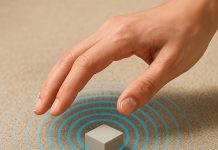
Billions of years ago, long before animals, plants, or even complex cells existed, tiny bacteria developed one of nature’s first engines.
This ancient motor allowed them to move—and that movement may have helped life spread and evolve across the planet.
Now, scientists from the University of Auckland, working with teams from UNSW Sydney and the University of Wisconsin–Madison, have pieced together the most complete picture yet of how this remarkable molecular motor first evolved.
Their findings, published in the journal mBio, shed light on how life first learned to move.
Dr. Caroline Puente-Lelievre, from the University of Auckland’s School of Biological Sciences, explains that the study focuses on stator proteins, tiny molecular parts that function like pistons in a car engine.
In bacteria, these proteins sit in the cell wall and transform charged particles—ions—into torque, the twisting force that powers the bacteria’s spinning tail, or flagellum. This whip-like tail pushes the cell through liquid, much like a microscopic propeller.
To trace how these stator proteins evolved, the team used powerful modern tools, including DeepMind’s AlphaFold AI, which predicts the 3D shapes of proteins.
They also analyzed genetic data from over 200 bacterial species and built evolutionary family trees showing how these molecular machines changed over billions of years.
Their analysis suggests that stators evolved from simple ion transporter proteins—molecules that move charged particles across cell membranes.
“Movement is essential to life, from microbes to animals,” said Puente-Lelievre. “We’re uncovering how that first motion began.”
Dr. Nick Matzke, senior researcher on the study, said the findings support a powerful evolutionary idea: that complex machines often evolve from simpler ones with different functions.
Just as bird feathers may have first evolved to keep dinosaurs warm before being used for flight, ancient bacteria may have repurposed an ion transporter to create one of life’s first motors.
To test their theories, the researchers compared 3D models of modern and ancestral stator proteins, searching for key structural differences.
They identified a specific region responsible for generating torque, then ran experiments using E. coli bacteria that lacked this region. Those bacteria couldn’t swim—confirming that this feature is vital for movement.
Even after billions of years, these bacterial motors have changed very little, showing just how effective nature’s design was. “We live in a remarkable era,” said Dr. Matthew Baker of UNSW Sydney.
“With tools like AlphaFold, we can look back billions of years and see how life’s machinery first took shape—and how it still drives movement today.”



